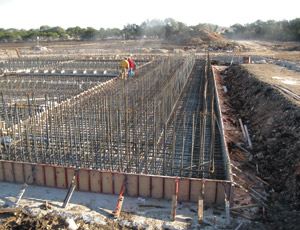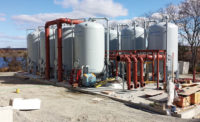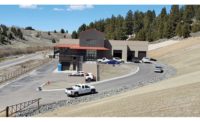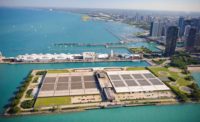Texas gained nearly four million people during the past decade, making it one of the fastest growing states in the nation, and all of those folks depend on clean, potable water, spurring municipalities to build new plants and upgrade to add capacity at existing facilities.

A nearly 150,000-person population growth in Williamson County, in suburban Austin, led three cities—Round Rock, Cedar Park and Leander—to pursue an innovative and cost-effective approach to meeting their residents’ water needs. They teamed up to create the Brushy Creek Regional Utility Authority (or BCRUA) and build a new $309-million water treatment plant, with operation of phase one online by 2012.
“Williamson is one of the fastest-growing counties in the state,” says BCRUA general manager Chris Lippe. “All three [cities] were at the point of needing some additional treated-water capacity.”
A regional planning process directed the cities to consider Lake Travis as the next source for water as they expanded the capacity of their current plants. The Lower Colorado River Authority created Lake Travis decades ago for flood control and to provide a source of water and electricity for area residents.
“[Coming together] was based on economies of scale,” says Mitch Fuller, president of BCRUA and a Cedar Park City Council member. “Instead of three projects, it’s one project. And by pooling resources, it’s more efficient. Water is a precious and limited resource, so this is the responsible thing to do. And it saves the three cities money in the process.”
Neil Graff, project principal in Austin for Omaha, Neb.-based HDR Inc., engineer for the Brushy Creek project, says large cities have partnered with smaller entities, often prompted by river authorities, on water treatment plants. But “for the most part, for cities of 100,000 or less, you don’t see it as much,” he says. “This is a stand-alone system.”
The U.S. Census estimates Texas’ population grew 18.8%, from 20.8 million people in 2000 to 24.7 million in 2009, adding more individuals than any other state. And it has continued to grow during the recession. From July 1, 2008, to July 1, 2009, it gained 478,000 people, more than any other state.
Brushy Creek Regional Utility Authority The three cities created BCRUA in 2007 to build a new multi-million-dollar plant, which will provide water in bulk, wholesale to each municipality. The Texas Water Development Board funded the multiphase project in 2008.
Cedar Park has the greatest immediate need for more water, but represents 15% of the water that will be available after completing phase two, Fuller says. Leander will receive 48% and Round Rock 37%. Each city will be responsible for paying back its share of the phase one bonds, $24.9 million, $91 million, $78 million respectively.
“This is a model for how Texas will want to see water allocated,” Fuller says. “It’s efficient in terms of infrastructure and process.”
Construction of the facility The $182- million first phase includes $145 million for construction of all of the ultimate-size pipelines and the initial stage of the treatment plant on a 35-acre, greenfield site in the Hur Industrial Park in Cedar Park. However, bids came in so low, 30% less than anticipated, Lippe estimates the final cost will come closer to $105 million or $110 million.
Pepper-Lawson Construction LP of Houston began building the $47-million, 42-million-gallon-per-day plant in December from an onsite management office. Initial start-up capacity will be 17 mgd, with the design able to accommodate several quick expansions.





Post a comment to this article
Report Abusive Comment